Record Breakers
This section highlights the fastest aircraft‚ highest altitude flights‚ and longest non-stop journeys‚ showcasing human ingenuity in aviation. Detailed specs and photos bring these feats to life.
Fastest Aircraft in the World
The fastest aircraft in history include the SR-71 Blackbird‚ which reached Mach 3.56‚ and the X-15‚ a rocket-powered plane that achieved Mach 6.72. These records showcase incredible engineering and propulsion advancements. The Lockheed SR-71 remains the fastest operational jet‚ while experimental craft like the X-15 pushed the boundaries of atmospheric flight. Such aircraft demonstrate the pursuit of speed in aviation‚ from military needs to scientific exploration. These achievements are detailed in Aircraft of the World: The Complete Guide‚ highlighting their technical specifications and historical significance. The guide also explores the evolution of speed records‚ from early supersonic jets to modern marvels.
This section is a must-read for aviation enthusiasts fascinated by the quest for velocity.
Highest Altitude Flights
The highest altitude flights have pushed the boundaries of aviation‚ with aircraft reaching extraordinary heights. The Lockheed U-2 and SR-71 Blackbird are notable for their high-altitude capabilities‚ operating above 70‚000 feet. The X-15‚ a rocket-powered aircraft‚ even reached the edge of space at 354‚200 feet. These feats demonstrate advancements in aerodynamics and propulsion systems. Aircraft of the World: The Complete Guide details these records‚ providing technical insights and historical context. Such achievements highlight humanity’s quest to explore the upper atmosphere and beyond. The guide also explores the challenges and innovations behind these remarkable flights‚ making it a valuable resource for aviation enthusiasts.
These records continue to inspire future generations of engineers and pilots.
Longest Non-Stop Flights
The longest non-stop flights showcase aviation’s endurance and efficiency. The Airbus A350 and Boeing 787 have set records for ultra-long-haul routes‚ with flights exceeding 19 hours. The Boeing 777X aims to push these limits further. Historically‚ the Concorde demonstrated supersonic endurance‚ though its flights were shorter. Aircraft of the World: The Complete Guide details these achievements‚ highlighting advancements in fuel efficiency and passenger comfort. Such flights reduce travel time‚ connecting distant cities like Singapore to New York. The guide explores the engineering and logistical challenges behind these record-breaking journeys‚ making it a fascinating read for aviation enthusiasts.
These flights symbolize the evolution of commercial aviation.
Airliners
Airliners represent the backbone of commercial aviation‚ offering diverse aircraft for global travel. From commercial jets to regional planes‚ they ensure efficient‚ comfortable passenger transport worldwide.
Commercial Jets
Commercial jets are the cornerstone of modern aviation‚ enabling efficient global air travel. These aircraft‚ such as Boeing and Airbus models‚ are designed for comfort and efficiency‚ offering advanced technology to minimize fuel consumption and emissions. With detailed technical specifications and over 3‚500 photographs‚ this guide provides a comprehensive overview of their development and operation. From short-haul to long-haul flights‚ commercial jets have revolutionized transportation‚ connecting millions worldwide. The guide highlights their evolution‚ safety features‚ and environmental impact‚ making it an essential resource for aviation enthusiasts and professionals alike. Discover the engineering marvels that keep the world connected through the skies.
Regional Aircraft
Regional aircraft are designed for short-haul flights‚ connecting smaller cities and remote areas to major hubs. These planes‚ such as the Bombardier CRJ or Embraer ERJ‚ are smaller in size but highly efficient‚ offering cost-effective solutions for regional routes. With a focus on fuel efficiency and reliability‚ they play a vital role in maintaining air travel accessibility worldwide. The guide provides detailed technical specifications‚ historical development‚ and operational insights‚ showcasing their importance in the aviation industry. Regional aircraft are essential for ensuring connectivity in regions where larger commercial jets cannot operate‚ making them a cornerstone of modern air travel infrastructure.
Wide-Body and Narrow-Body Planes
Wide-body and narrow-body planes are categorized by their fuselage width and passenger capacity. Wide-body aircraft‚ such as the Boeing 777 and Airbus A350‚ feature twin aisles and are used for long-haul‚ high-capacity routes. Narrow-body planes‚ like the Boeing 737 and Airbus A320‚ are smaller‚ single-aisle aircraft ideal for short to medium-haul flights. The guide provides detailed comparisons‚ highlighting their technical specifications‚ fuel efficiency‚ and operational roles. These aircraft are pivotal in modern aviation‚ catering to diverse passenger and cargo needs. Their designs reflect advancements in aerodynamics and comfort‚ ensuring efficient and safe travel for millions worldwide. This section offers a comprehensive overview of their evolution and significance in the aviation industry.
Helicopters and Vertiplanes
Helicopters and vertiplanes offer unique versatility‚ excelling in rescue‚ transport‚ and surveillance. Their designs vary from military to civilian use‚ with advanced rotorcraft pushing aviation boundaries daily.
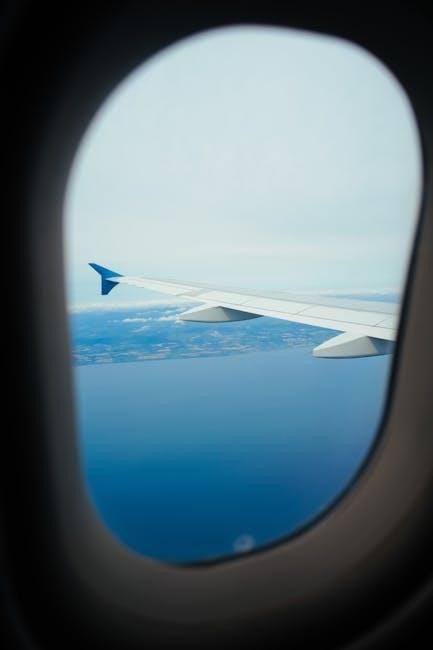
Military Helicopters
Military helicopters are versatile aircraft designed for combat‚ transport‚ and surveillance. They play a crucial role in modern warfare‚ offering mobility and firepower. From the iconic Apache to the Black Hawk‚ these machines are built for durability and precision. Equipped with advanced weaponry and stealth technology‚ they excel in hostile environments. Their ability to operate in diverse terrains makes them indispensable for missions requiring rapid deployment. Historical models like the Huey have shaped military aviation‚ while modern designs continue to evolve with cutting-edge innovations. This section explores their evolution‚ technical specifications‚ and the impact they’ve had on global conflicts‚ highlighting their significance in military strategy and operations worldwide.
Civilian Helicopters
Civilian helicopters are incredibly versatile‚ serving roles from medical evacuation to tourism. They are widely used for search and rescue‚ firefighting‚ and corporate transport. Notable models like the Bell 407 and Airbus H135 are known for their reliability and comfort. These aircraft often feature advanced avionics and spacious interiors‚ catering to diverse needs. Their ability to hover and maneuver in tight spaces makes them indispensable for urban operations. This section details their design‚ capabilities‚ and real-world applications‚ showcasing how they contribute to civilian life and industries. With a focus on safety and efficiency‚ civilian helicopters remain a vital part of modern aviation‚ supporting critical services and enabling unique experiences worldwide.
Advanced Rotorcraft Designs
Advanced rotorcraft designs represent the cutting edge of helicopter technology‚ blending innovation with performance. These next-generation aircraft feature tiltrotors‚ coaxial rotors‚ and distributed propulsion systems‚ enabling unprecedented speed and agility. They incorporate lightweight materials‚ advanced avionics‚ and fly-by-wire systems for enhanced efficiency and safety. Experimental designs‚ such as the Bell-Boeing V-22 Osprey‚ showcase vertical takeoff capabilities combined with fixed-wing flight speeds. These rotorcraft are tailored for military and civilian applications‚ including search and rescue‚ medical evacuation‚ and high-speed transport. Their versatility and adaptability make them indispensable for future aviation needs‚ pushing the boundaries of what rotorcraft can achieve in both practical and extreme environments.

Warplanes of the 50s‚ 60s‚ 70s
Iconic warplanes from this era defined modern air combat‚ featuring legendary models like the F-4 Phantom and MiG-21‚ showcasing speed‚ maneuverability‚ and evolving military technology.
Fighter Jets
Fighter jets emerged as pivotal assets in mid-20th-century air combat‚ with models like the F-4 Phantom and MiG-21 dominating skies. These aircraft combined speed‚ agility‚ and firepower‚ revolutionizing aerial warfare. The F-4 Phantom‚ a U.S. Navy workhorse‚ excelled in both air-to-air and ground-attack roles‚ while the MiG-21 became a symbol of Soviet-era air power‚ known for its simplicity and effectiveness. Both designs emphasized supersonic capabilities and advanced avionics‚ setting new standards for modern air combat. The guide details their technical evolution‚ strategic impact‚ and legendary status among pilots‚ offering a comprehensive look at their roles in shaping Cold War-era air superiority. These jets remain iconic‚ influencing future fighter designs globally.
Bomber Aircraft
Bomber aircraft played a crucial role in military aviation‚ particularly during World War II and the Cold War. The Avro Lancaster‚ a British heavy bomber‚ is renowned for its role in nighttime raids‚ while the B-29 Superfortress‚ a U.S. bomber‚ introduced pressurized cabins and remote-controlled gun turrets. The B-52 Stratofortress‚ still in service‚ exemplifies durability and strategic importance. These bombers were designed for payload capacity and long-range missions‚ often incorporating cutting-edge technology for their time. The guide details their historical significance‚ technical advancements‚ and operational impact‚ showcasing how bombers shaped modern airpower and military strategies. Their legacy continues to influence contemporary bomber designs‚ ensuring their place in aviation history.
Reconnaissance Planes
Reconnaissance planes are specialized aircraft designed for gathering intelligence‚ surveillance‚ and reconnaissance (ISR). The U-2‚ developed in the 1950s‚ is a iconic example‚ known for its high-altitude missions. The SR-71 Blackbird‚ with its supersonic speeds‚ revolutionized reconnaissance during the Cold War. These aircraft often feature advanced sensors‚ cameras‚ and radar systems to capture critical data. Their designs prioritize stealth‚ speed‚ and altitude to evade detection. Historical examples include the RB-29 and RB-50‚ which played key roles in post-WWII operations. Modern reconnaissance planes integrate cutting-edge technology‚ such as satellite connectivity and real-time data transmission‚ making them indispensable in military and strategic operations. Their evolution reflects the growing importance of intelligence in global security.
Modern Combat Aircraft
Modern combat aircraft feature cutting-edge technology‚ including stealth designs‚ multirole capabilities‚ and advanced avionics. They represent the pinnacle of innovation in aerial warfare and defense strategies.
Stealth Technology
Stealth technology represents a groundbreaking innovation in modern combat aircraft design‚ enabling planes to evade radar detection. By incorporating radar-absorbing materials and unique aerodynamic shapes‚ these aircraft minimize their radar cross-section‚ making them nearly invisible to enemy systems. This advancement significantly enhances survivability in hostile environments. Stealth technology is a critical component of fifth-generation fighters‚ such as the F-22 Raptor and F-35 Lightning II‚ which combine speed‚ agility‚ and advanced avionics. The integration of stealth capabilities has revolutionized air combat‚ allowing aircraft to penetrate heavily defended airspace and execute missions with greater precision and effectiveness. This technology underscores the ongoing evolution of military aviation‚ where invisibility and lethality go hand in hand.
Multirole Fighters
Multirole fighters are versatile combat aircraft designed to perform both air-to-air and air-to-ground missions with exceptional efficiency. These advanced jets combine superior maneuverability‚ advanced avionics‚ and precision weaponry‚ making them indispensable in modern air forces. Examples include the F-16 Fighting Falcon and F/A-18 Hornet‚ which have proven their capabilities in various theatres worldwide. Equipped with cutting-edge radar systems‚ beyond-visual-range missiles‚ and smart bombs‚ multirole fighters enable pilots to dominate both aerial and ground battles. Their adaptability and lethality have made them a cornerstone of military aviation‚ ensuring tactical superiority in diverse operational scenarios. This versatility has solidified their role as key assets for nations seeking to maintain air dominance in the 21st century.
Unmanned Aerial Vehicles (UAVs)
Unmanned Aerial Vehicles (UAVs) represent a revolutionary leap in aviation technology‚ offering unparalleled flexibility in military and civilian applications. These remotely controlled or autonomous aircraft are equipped with advanced sensors‚ cameras‚ and communication systems‚ enabling real-time data collection and precision strikes. UAVs like the MQ-9 Reaper and MQ-20 Avenger are pivotal in modern warfare‚ conducting surveillance‚ reconnaissance‚ and combat missions without risking human lives. Their ability to operate in hostile environments and perform long-endurance flights makes them indispensable assets. Beyond defense‚ UAVs are increasingly used in civilian sectors for mapping‚ environmental monitoring‚ and disaster response‚ showcasing their versatility and transformative potential in shaping the future of aviation.
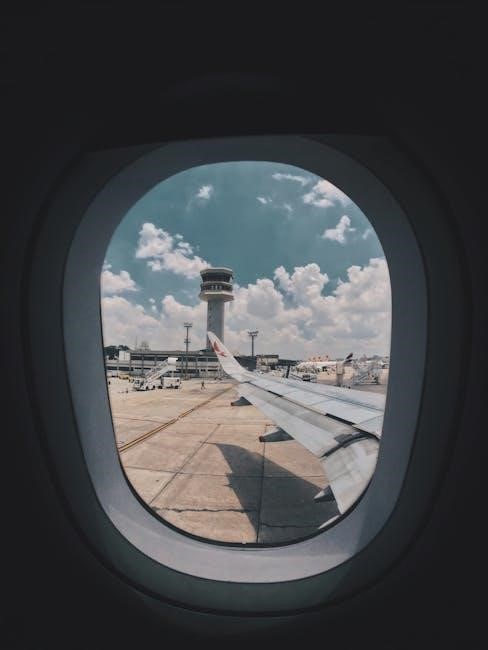
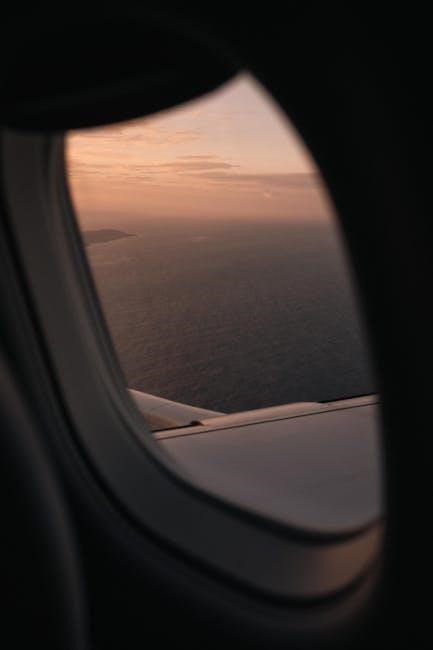
Cutting Edge
Cutting-edge aviation innovations include electric and hybrid aircraft‚ supersonic jets‚ and spaceplanes‚ pushing boundaries of speed‚ efficiency‚ and space exploration with groundbreaking technology and designs.
Electric and Hybrid Aircraft
Electric and hybrid aircraft represent the future of sustainable aviation‚ offering reduced emissions and noise. These planes use advanced battery technology and hybrid-electric propulsion systems‚ minimizing environmental impact while maintaining performance. Innovations like the Eviation Alice and hydrogen fuel cell-powered aircraft are paving the way for greener skies. Researchers are also exploring solar-powered options and lightweight materials to enhance efficiency. Governments and companies are investing heavily in these technologies to meet climate goals. The transition to electric and hybrid aircraft is expected to revolutionize short-haul and regional flights‚ making air travel cleaner and more accessible. This shift is a significant step toward achieving net-zero emissions in the aviation industry by 2050.
Supersonic Jets
Supersonic jets are revolutionizing air travel by breaking the sound barrier‚ offering speeds over Mach 1. Modern designs like Aerion’s AS2 and Boom Supersonic’s Overture aim to reduce travel times significantly. These aircraft use advanced aerodynamics and materials to minimize sonic boom impacts‚ making them viable for commercial use. Innovations in engine technology and quiet supersonic flight capabilities are addressing regulatory challenges. Supersonic jets promise to transform long-haul travel‚ enabling faster global connectivity. With ongoing research and investment‚ these planes could become the future of luxury and efficient air travel‚ reconnecting cities and continents like never before. The next generation of supersonic jets is set to redefine aviation standards and passenger expectations worldwide.
Spaceplanes
Spaceplanes represent the fusion of aircraft and spacecraft‚ designed for suborbital and orbital flights. Examples like the Space Shuttle and X-15 pioneered this category‚ showcasing reusability and advanced propulsion systems. Modern spaceplanes‚ such as Sierra Nevada’s Dream Chaser and Virgin Galactic’s SpaceShipTwo‚ are revolutionizing space access. These vehicles often feature hybrid propulsion systems and reusable designs‚ reducing costs and increasing efficiency. Spaceplanes are pivotal for satellite launches‚ space tourism‚ and scientific research. Their versatility allows them to operate in both atmospheric and space environments‚ making them a cornerstone of future space exploration. With ongoing innovations‚ spaceplanes are set to play a crucial role in expanding humanity’s presence in space.
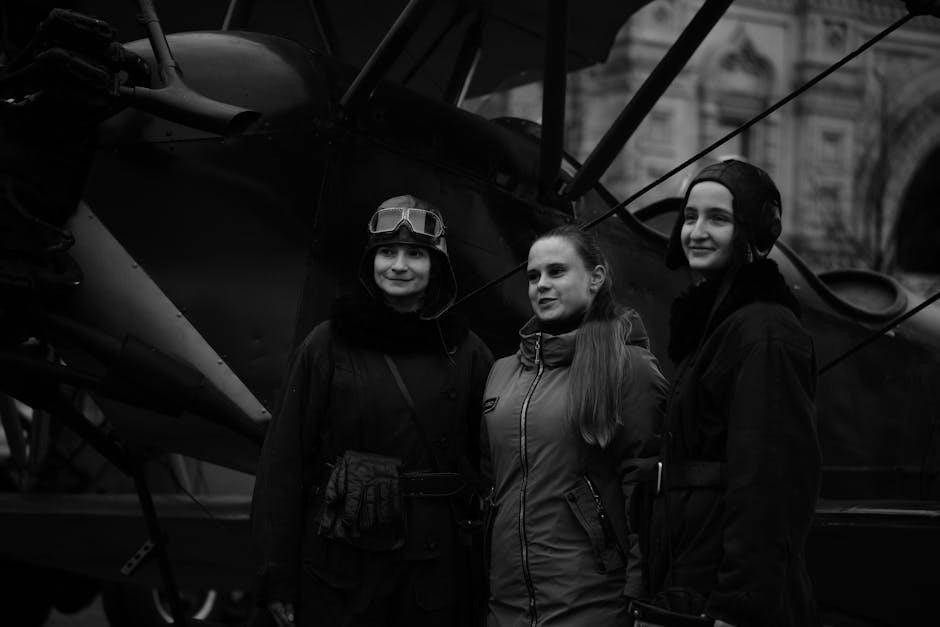
Adventures in Flight
Explore the thrilling stories of early aviation pioneers‚ record-breaking flights‚ and around-the-world journeys that shaped aviation history and inspired future generations of pilots and enthusiasts alike.
Early Aviation Pioneers
The early aviation pioneers laid the foundation for modern flight‚ with inventors like the Wright Brothers achieving the first powered‚ controlled‚ and sustained flight in 1903. Their groundbreaking work inspired others‚ such as Amelia Earhart‚ who became the first woman to fly solo across the Atlantic in 1932. Charles Lindbergh’s solo non-stop transatlantic flight in 1927 marked another milestone‚ capturing global attention. These trailblazers faced immense challenges‚ pushing technological boundaries and enduring personal risks. Their determination and innovation not only advanced aviation but also sparked a global fascination with flight‚ paving the way for the modern aircraft we see today. Their legacy continues to inspire new generations of pilots and engineers.
Record-Breaking Flights
Record-breaking flights have pushed the boundaries of aviation‚ showcasing incredible feats of endurance‚ speed‚ and innovation. The Concorde‚ for instance‚ set a benchmark for supersonic travel‚ while the Boeing 747 demonstrated remarkable endurance on long-haul routes. Historical milestones include Charles Lindbergh’s solo transatlantic flight in 1927 and Amelia Earhart’s attempted global circumnavigation in 1937. These achievements highlight the courage and ingenuity of pilots and engineers‚ inspiring future advancements in aviation technology. Such flights not only capture the imagination of the public but also drive progress in aircraft design and performance‚ leaving a lasting legacy in the history of flight.
Around-the-World Journeys
Around-the-world journeys have captivated aviation enthusiasts‚ showcasing the endurance and capabilities of aircraft. From early pioneers like Charles Lindbergh to modern record-breakers‚ these flights highlight human determination and technological advancement. The Concorde famously circumnavigated the globe in record time‚ while modern jets like the Boeing 747 and Airbus A380 have enabled faster and more comfortable global travel. Such journeys not only test the limits of aircraft performance but also symbolize the quest for exploration and connectivity. These feats continue to inspire innovation‚ pushing the boundaries of what is possible in aviation and connecting the world like never before.
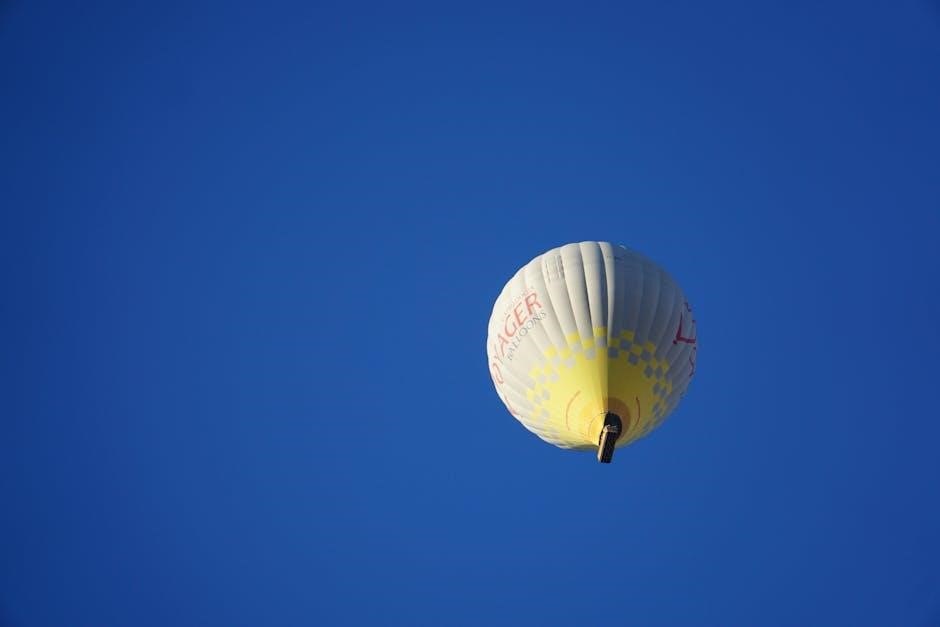
Aircraft at Work
Aircraft play vital roles in cargo transport‚ medical evacuations‚ and firefighting‚ showcasing their versatility and importance in various industries. These planes are indispensable for critical tasks worldwide;
Cargo Planes
Cargo planes are the backbone of global logistics‚ transporting goods across continents. These aircraft are designed for heavy loads‚ featuring reinforced floors and large cargo doors. From smaller turboprops to massive jets like the Boeing 747F and Antonov An-124‚ cargo planes ensure timely delivery of goods. They play a critical role in disaster relief‚ delivering aid to remote areas. Specialized cargo aircraft‚ such as those with oversized cargo capabilities‚ highlight engineering innovation. The versatility of cargo planes extends beyond commercial use‚ supporting military operations and humanitarian efforts. Their importance in the global economy cannot be overstated‚ making them indispensable in modern aviation.
Medical Evacuation Aircraft
Medical evacuation aircraft are crucial for transporting patients in emergency situations. Equipped with advanced medical equipment‚ these planes ensure critical care during transit. From helicopters to fixed-wing aircraft‚ they operate in various environments‚ including remote areas and disaster zones. Many are designed for MEDEVAC (medical evacuation) and CASEVAC (casualty evacuation) missions‚ prioritizing patient safety and comfort. These aircraft often feature stretchers‚ life-support systems‚ and medication storage. Their role extends to military operations‚ natural disasters‚ and search-and-rescue efforts. The ability to provide en-route care makes them indispensable in saving lives. Detailed in aviation guides‚ these aircraft highlight innovation in medical transport‚ blending speed‚ reliability‚ and specialized healthcare capabilities.
Firefighting Planes
Firefighting planes are specialized aircraft designed to combat wildfires and protect communities. These planes are equipped with large water tanks or retardant dispensers‚ enabling them to drop fire-suppressing materials over vast areas; Often modified from military or cargo aircraft‚ they play a critical role in wildfire management. Their ability to operate in challenging environments makes them indispensable during fire seasons. Some models feature advanced systems for precision drops‚ minimizing waste and maximizing effectiveness. Firefighting planes are a vital tool in preserving natural landscapes and saving lives. Detailed in aviation guides‚ these aircraft showcase innovation in aerial firefighting‚ blending durability‚ capacity‚ and strategic capabilities to combat nature’s fury.

Weird and Wonderful
Explore experimental aircraft‚ unconventional designs‚ and historical oddities that push aviation boundaries. These unique planes spark curiosity and showcase creativity in aircraft engineering and innovation.
Experimental Aircraft
Experimental aircraft represent the cutting edge of aviation innovation‚ featuring unconventional designs and groundbreaking technologies. These planes are built to test new aerodynamic concepts‚ propulsion systems‚ and materials. From the iconic X-15‚ which reached the edge of space‚ to modern prototypes like the Flying Wing‚ experimental aircraft push the boundaries of what is possible. They often serve as precursors to future commercial and military designs‚ influencing the evolution of flight. With detailed technical descriptions and rare photographs‚ this section offers a fascinating glimpse into the creative and often radical approaches to aircraft design. These planes are true pioneers‚ shaping the future of aviation and inspiring new generations of engineers and pilots.
Unconventional Designs
Unconventional aircraft designs challenge traditional norms‚ offering unique solutions to aerodynamic and operational challenges. From flying wings to tailless configurations‚ these designs often prioritize efficiency or specialized missions. The flying wing concept‚ exemplified by the Northrop Grumman B-2 Spirit‚ eliminates the fuselage and tail‚ reducing drag and enhancing stealth. Other designs‚ like the X-48‚ explore blended wing-body shapes for improved fuel efficiency. These innovative approaches‚ while not always practical for commercial use‚ pave the way for future advancements in aviation technology. With detailed illustrations and technical insights‚ this section explores the creativity and engineering behind these extraordinary aircraft‚ showcasing how they redefine the possibilities of flight.
Historical Oddities
Historical oddities in aviation reveal fascinating yet unconventional aircraft designs that often never entered mass production. These unique planes‚ such as the Caproni Ca.60 or the Messerschmitt Me 321‚ showcase innovative ideas that were ahead of their time. Many were experimental prototypes designed for specific purposes‚ like the Ca.60’s attempt at transatlantic flight or the Me 321’s role as a massive cargo glider. These aircraft‚ while not widely adopted‚ offer insights into the creative problem-solving of early aviation pioneers. With rare photographs and detailed descriptions‚ this section highlights the quirky and often forgotten designs that shaped aviation history‚ making them a treasure trove for enthusiasts and collectors alike.

British Aircraft of World War II
Explore iconic British WWII aircraft like the Spitfire‚ Lancaster‚ and Hurricane‚ with detailed specs‚ historical context‚ and rare photos showcasing their pivotal roles in the war effort.
Spitfire
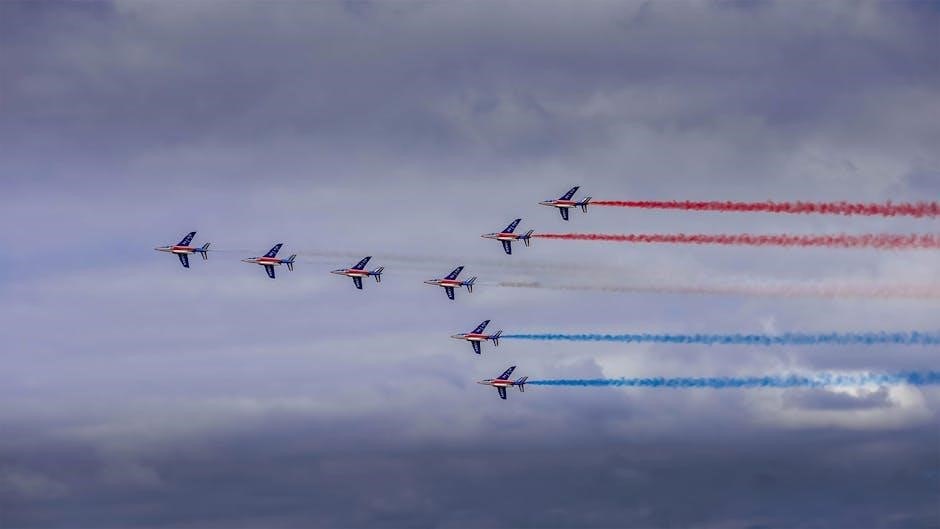
The Supermarine Spitfire‚ designed by R.J. Mitchell‚ was a iconic British fighter aircraft of WWII. Its sleek design and Rolls-Royce Merlin engine made it highly maneuverable and fast‚ reaching speeds over 370 mph. Armed with eight machine guns‚ it played a crucial role in the Battle of Britain‚ defending against Luftwaffe attacks. The Spitfire’s elliptical wing design and ability to withstand damage made it a favorite among pilots. Over 20‚000 Spitfires were produced in various variants‚ adapting to evolving wartime needs. Its legacy endures as a symbol of British resilience and innovation during WWII‚ celebrated in aviation history and popular culture alike.
Lancaster Bomber
The Avro Lancaster was a British heavy bomber used during WWII‚ renowned for its power and endurance. With a top speed of 280 mph and a range of 3‚000 miles‚ it could carry up to 12‚000 lbs of bombs. The Lancaster played a pivotal role in nighttime missions‚ including the famous Dambusters raid. Its four Rolls-Royce Merlin engines and robust design made it a reliable workhorse for the RAF. Over 7‚000 Lancasters were produced‚ with the last retiring in 1956. Its contributions to Allied victory were immense‚ solidifying its place in aviation history as one of the most effective bombers of the war.
Hurricane
The Hawker Hurricane was a pivotal British fighter aircraft during WWII‚ known for its durability and maneuverability. With a top speed of 340 mph‚ it was armed with eight machine guns‚ making it a formidable opponent. Over 14‚000 Hurricanes were produced‚ playing a crucial role in the Battle of Britain. Its robust design allowed it to withstand significant damage‚ and it remained in service until the war’s end. The Hurricane’s contributions were vital‚ securing its legacy as one of the most important Allied fighters of the era.
